One of the geological wonders of Iran is the Salt Domes. Large amounts of subterranean salt have migrated toward the earth’s surface in this phenomenon. Over thousands of years, these strata eventually assumed the form of a dome.
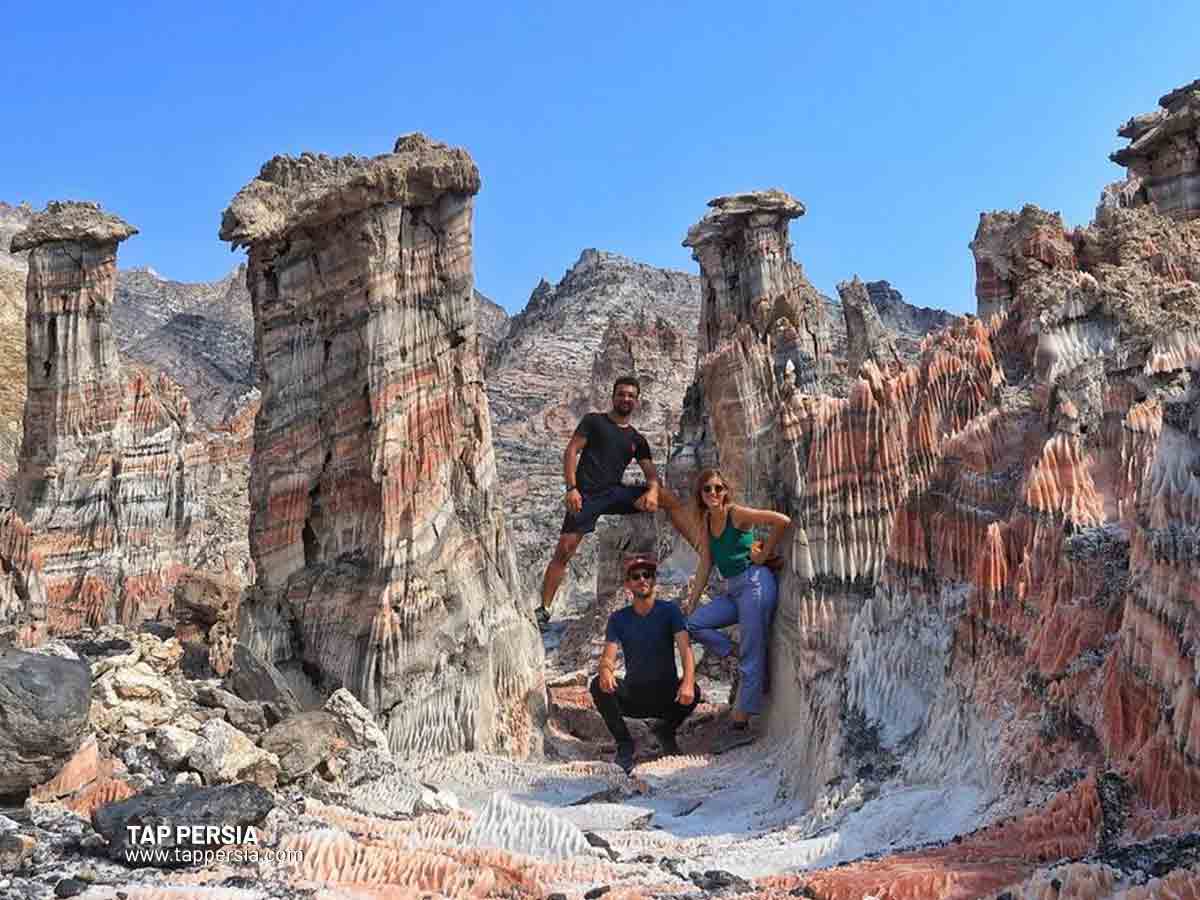
Most of the salt domes of Iran have occurred in tropical areas. They are primarily observed in the provinces of Semnan Fars and Hormozgan. Numerous Iranian islands in the Persian Gulf, including Hormuz Island, are really salt domes. Here we will talk more about the salt mountains in Iran:
The Formation of Salt Domes
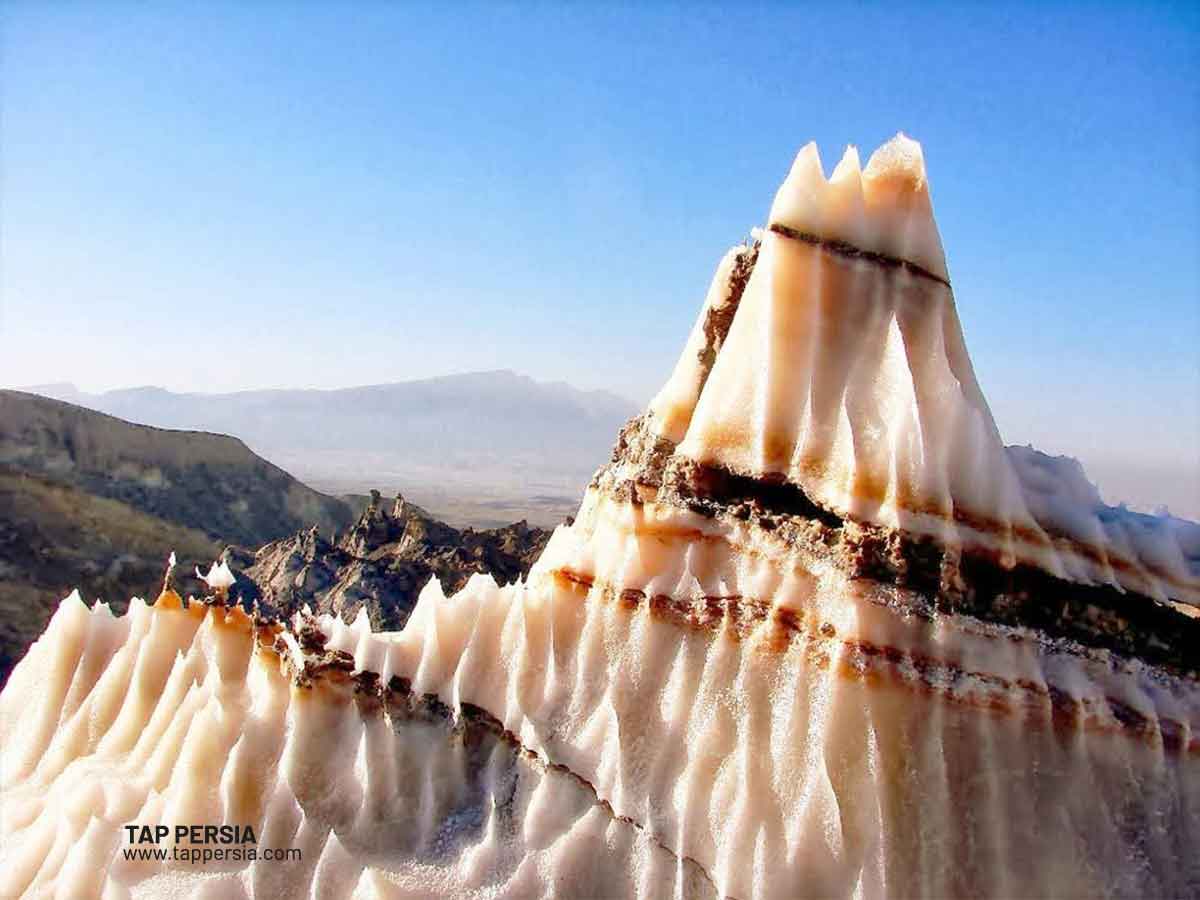
Salt domes have a rock salt core in their center. It behaves like an elastic material when rock salt is exposed to abrupt vibration. So it either breaks into pieces or turns into a paste. The salt mass behaves like a thick liquid when it is continuously under pressure, though.
It’s known as a creep when it happens. Salts can be formed under a variety of circumstances, including melting and freezing points, density, pressure fluctuations, and temperature variations.
Diapiric folds or salt domes can take many shapes. In America, their range on the ground is 500–8 km, while in the Caspian Sea’s northeast, it is 5–12 km.
The Elements for Salt Dome Structures
A small center core is present in every salt dome. Rocks from the region’s sedimentary strata make up the region that surrounds the center core. The top surface of the majority of naturally occurring salt deposits is coated with sedimentary layers. Stone veneer refers to these layers. Some of them have a stone veneer that is several hundred meters thick. Other others lack the stone veneer.
For instance, the Qom region’s salt dome, which is situated to the north of the Zangar Heights, lacks a stone veneer. Anhydrite, gypsum, and limestone are frequently used to cover rocks. The cover stone may occasionally have deposits of sulfuric substances.
The Shape of Salt Domes of Iran
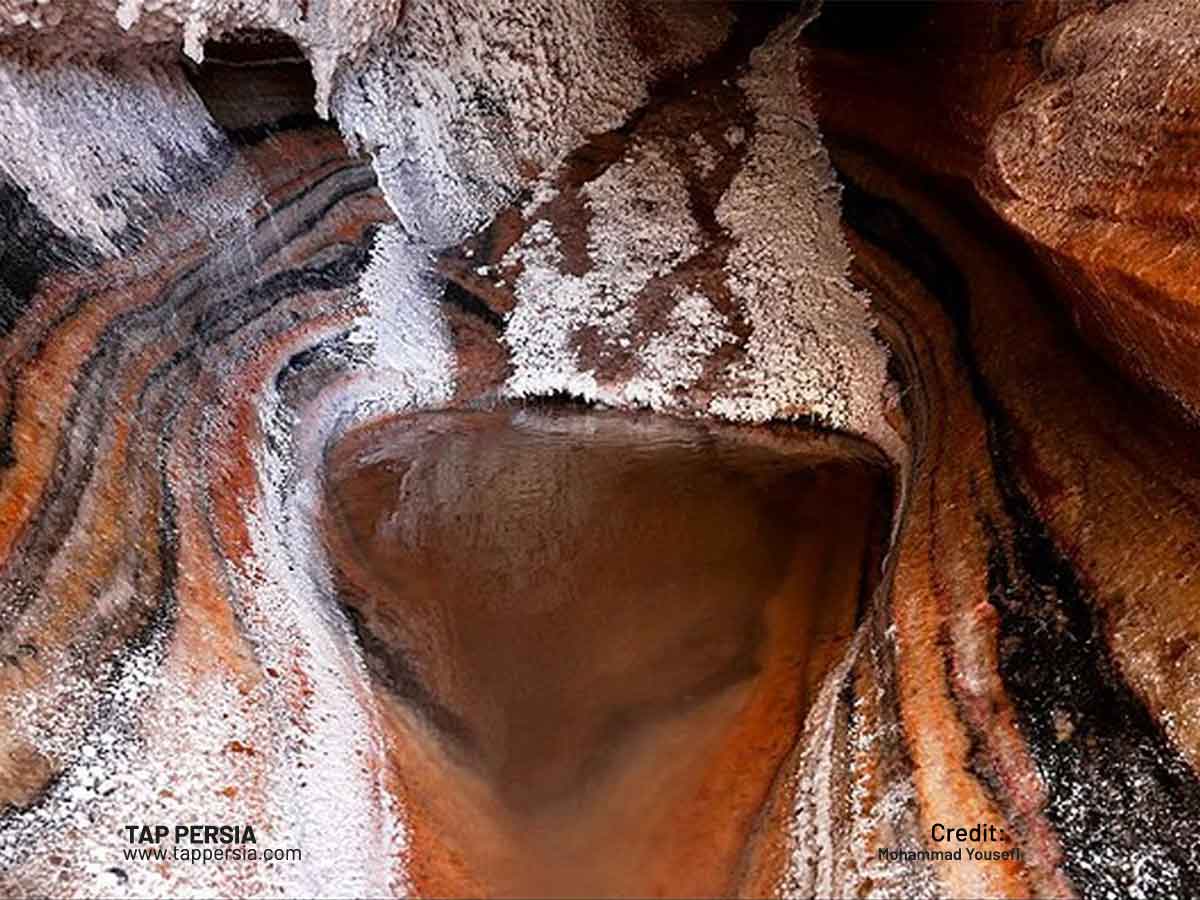
Salt formations can take the shape of salt stocks, waves, ridges, pillows, anticlines, etc.
The salt domes of Iran can take many different shapes. The exterior walls of many salt domes in Iran are steeply sloping, ranging from 80 to 90 degrees. Rare salt domes have symmetrical edifices. An asymmetrical dome is the norm.
In most salt domes, the slope of the walls also changes in different directions. Most salt domes have a cross-section that resembles a circle, however, occasionally an oval shape is used. The diameter of the domes’ horizontal extension varies greatly and is sometimes several km.
Salt Domes of Iran: How They Were Made
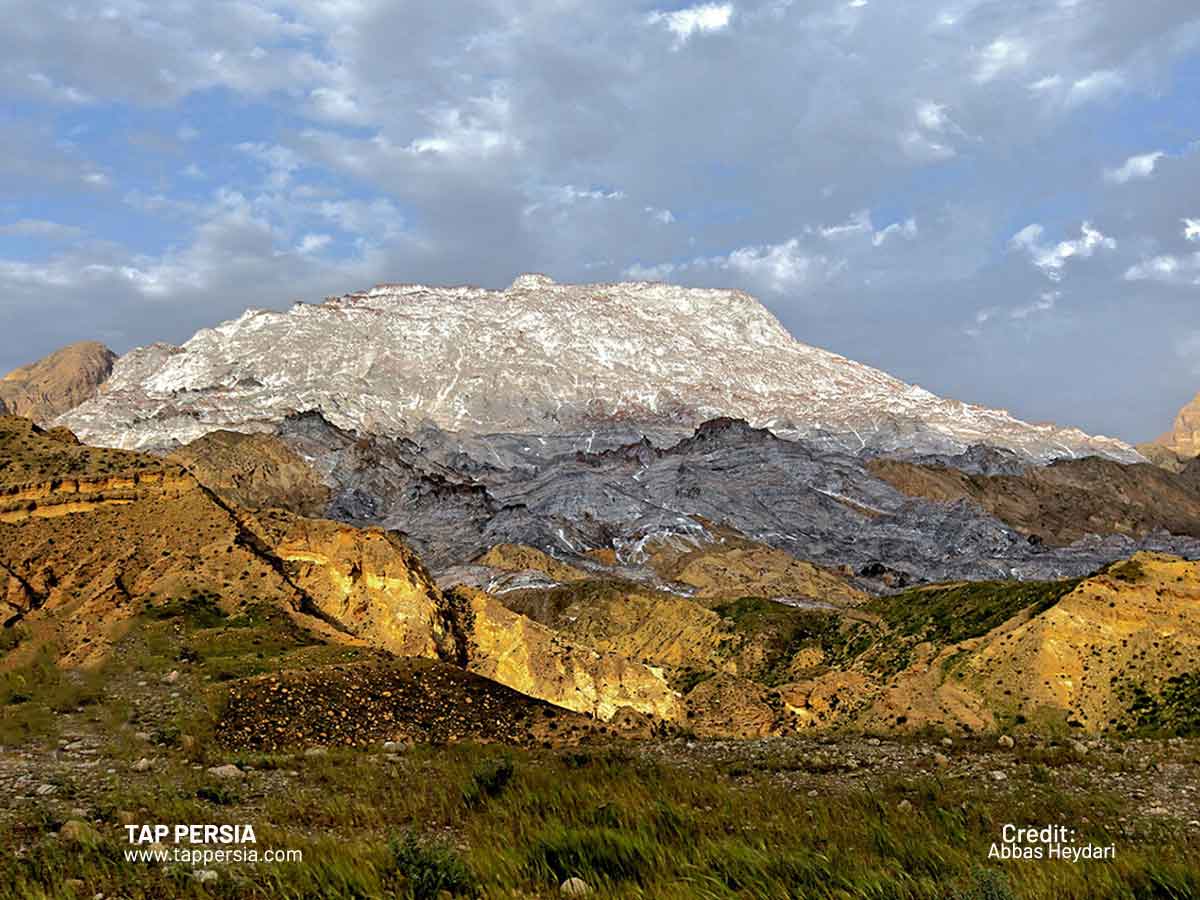
Salt cannot travel at the same rate everywhere around the world. Salt tends to flow higher in general. Its flexibility is the cause of this. The power and pushing force of the salt lessen as it rises. Salt deposits continue to travel vertically as the load increases. This displacement can occur at a rate of 0.1 to 1 mm annually.
The Origin of This Phenomenon in Nature
Under the ground, salt is present in significant quantities wherever natural salt deposits are found. We refer to these layers as the salt dome’s feeding layers. These salt layers range in thickness from a few hundred meters to more than a thousand meters in some unusual circumstances.
Different Salt Dome Types According to the Depth of the Upper Surface
In terms of size and scope, salt structures are separated into three groups:
1.Shallow Salt Domes
Like the majority of the salt domes of Iran, the upper surface of these domes is located less than one km above the earth.
2.Medium Deep Salt Domes
One to 1.5 km above the surface is where their upper surface is located.
3.Deep Salt Domes
They are more than 1.5 kilometers above the ground. More than 3000 meters below sea level are some salt domes of Iran.
The Steps in the Formation of a Salt Dome
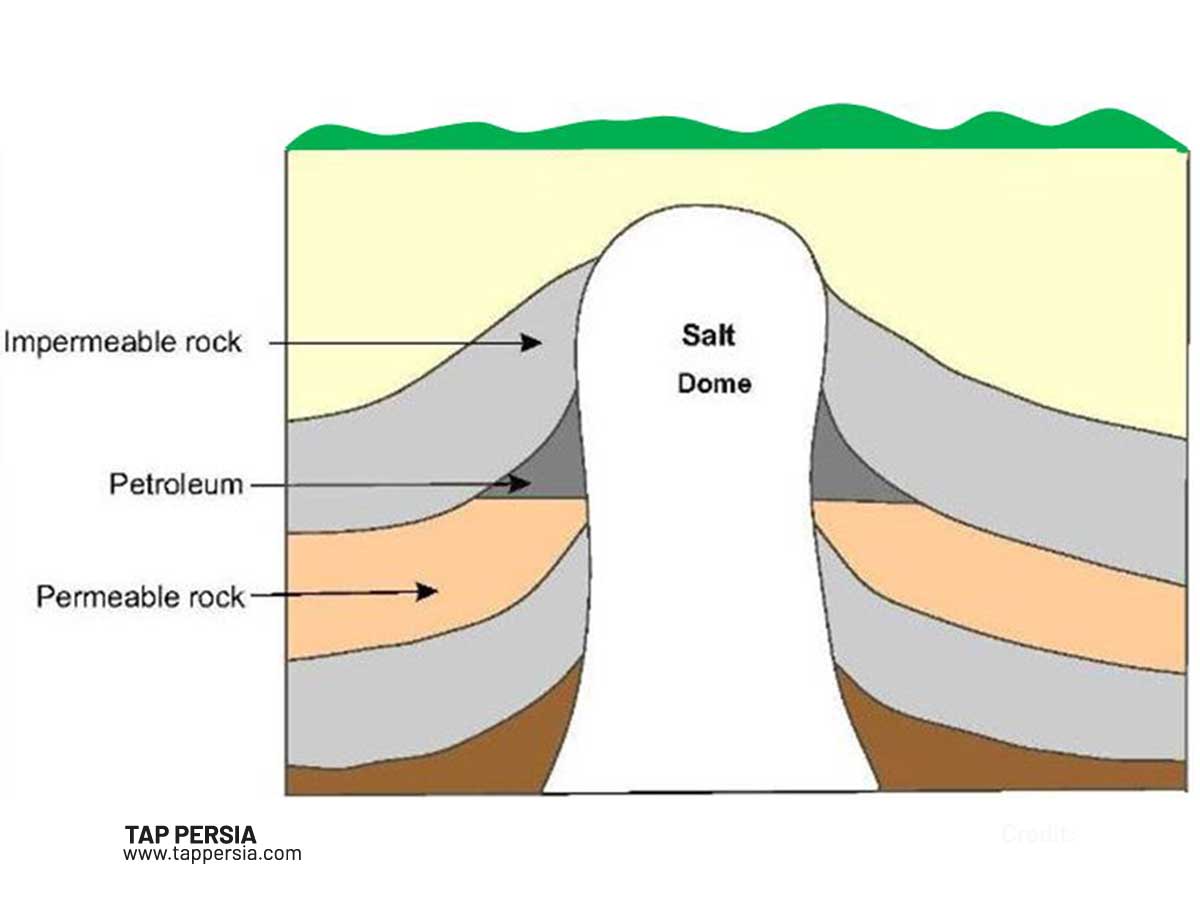
These procedures are not unique to the salt domes of Iran. They can be located everywhere. These are them:
- The emergence of floors with a little slope
- The development of a straightforward dome-shaped anticline
- The development of a genuine salt dome
The Most Notable of Iran’s Salt Dome Structures
In Iran, a few of the most notable natural occurrences are:
Iran Destinations: Konarsiah in Firozabad, Fars, Qom, Qara Aghaj, Khajeh, Jashak (Dashti), Pul, Hormuz Island, Abu Musi Island, Bagh Behzad, Menor, Malha, Angoran, Lark, Darbast, Khormouj, Bezenjan, Lamzan (Hormozgan Province), Mader (Dargaz Hormozgan Province), Qeshm, Getchin, Semnan, Nehand, Morjan in Firuzabad, Faro Island, Bestak (Hormozgan Province), Shur Dareh in Tabriz, Poze Mountain (Lengeh Port), Darabgerd (Darab), Kohene (Lar), Bastane (Bander Lengeh), Barbala (Lar), Hamiran (Bander Lengeh), Kermostaj Larestan, Rastaq (Hormozgan Province).
1.Qara Aghaj Salt Dome
This salt dome is 65 kilometers from Mianeh City, 70 kilometers from Hashtroud, and 193 kilometers from Tabriz, the administrative center of the Eastern Azerbaijan Province. His body is covered with crimson and grey splotches.
2.Tabriz Valley Salt Dome
The Eastern Azerbaijan Province’s Tabriz city lies eight km north of this dome. The pink, grey, and brown color of this dome is a result of salt deposits.
3.Khwaja Salt Dome
In Tabriz, there is a salt dome. In its dome, there is an active mine. There are shades of purple, red, and grey in it.
4.Konarsiah Salt Dome in Firozabad, Fars Province
This is one of the most beautiful salt domes of Iran that is situated 20 kilometers southwest of Firozabad City and 90 km southeast of Shiraz. The Firozabad-Jam-Assalouye route leads to the Konar Siah salt dome.
Around the salt dome, there are a variety of seasonal streams. There are three springs with the names Kanaar Siah, Mangarek and Narak on the southwest side of the Aghar anticline.
5.Salt Dome of Qom
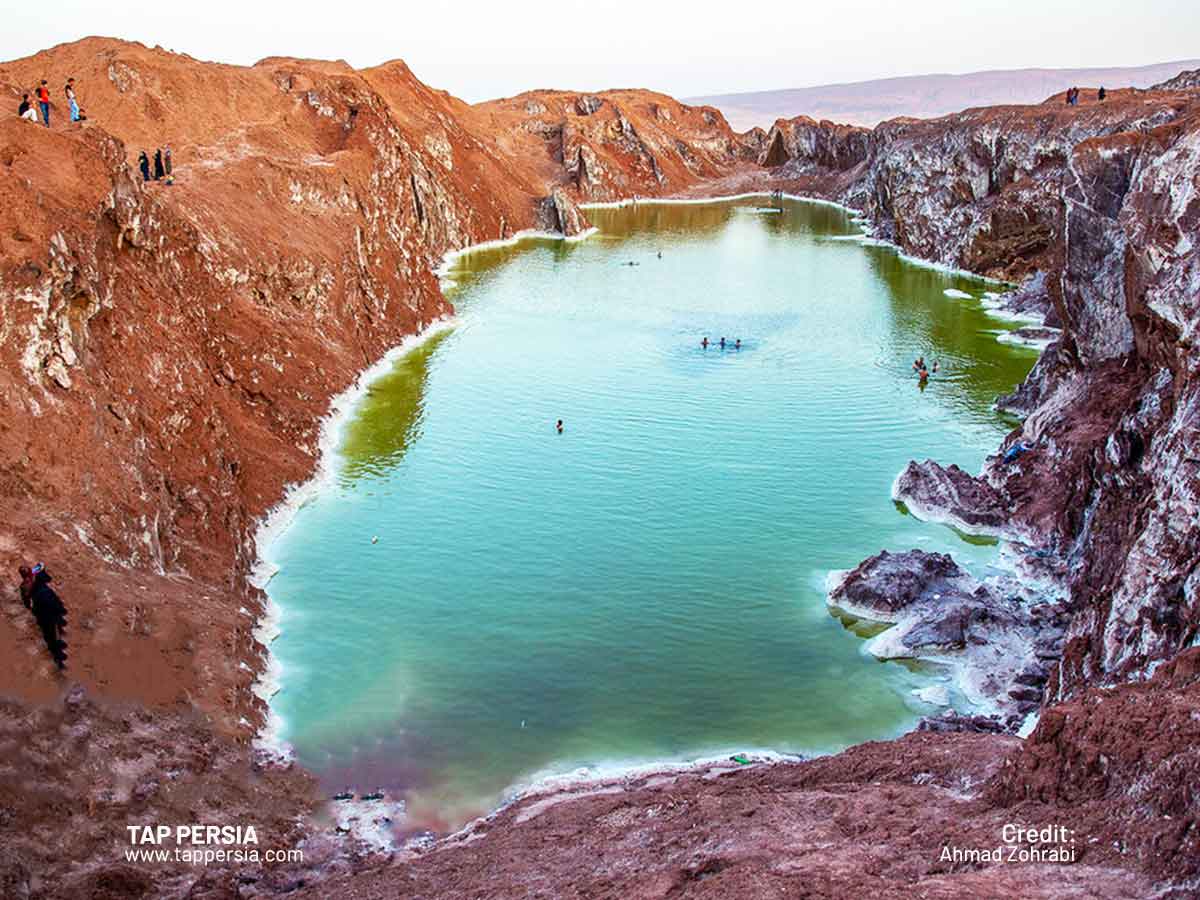
This is among the top salt domes of Iran which is located 15 kilometers from the Qom Road in the direction of Jafarieh. It is recognized as one of Qom’s natural wonders. The Qom salt dome has a geological history that dates back sixty million years.
The only symmetrical salt dome in the entire globe is this one. There is a tiny lake within as well. The salt crystals have developed into distinct, wavy blades inside this dome. It continues to grow to the north for another three km.
In the center of the dome sits a salt lake. It’s a tropical area here. As a result, salty waters evaporate following seasonal rains brought on by extreme heat. Salt domes then develop.
This region is home to a Seljuk-era monument known as the Kuh-e Namak caravansary, which translates as a “salt mountain” monument. As one of Iran’s national works, this artifact has been registered. This caravansary has a four-eyvan style of layout. Stone and brick make up the roof and are the primary building elements in the walls.
6.Salt Domes of Hormuz
Small islands are formed in the Persian Gulf by these salt formations. The folds of the Tertiary Zagros Mountains have been penetrated by salts from the Hormuz. The summit, side, anticline axis, offset, and faults are only a few examples of the various situations and places where these holes can be found.
The salt domes of Iran located in the Hormuz region really date back to the Jurassic period. Rock salt was injected plastically into the nearby sedimentary strata, which led to the development of salt formations. The underlying layers provide the salt that makes up the salt domes’ central cores.
7.Nahand Salt Dome
10 km to the northwest of the hamlet of Tazeh Kand is where you’ll find this enormous salt construction. Southwest of Nahand village in the province of West Azarbaijan is Tazeh Kand village. In the red and grey marls, this dome is situated. Furthermore, it moves in a northwest-southeast path. Among salt domes in Azerbaijan, this one is the biggest.
8.Behzad Garden Salt Dome
One of the most famous salt domes of Iran is this salt formation. They are situated in the provinces of Chahar Mahal and Bakhtiari, as well as to the south of Lordegan. It is red and grey in color. The salt dome structure contains a lot of salt and limestone as well.
9.Manoor Salt Dome
The settlement of Manoor, which is part of the Shabestar town neighborhood, is where you can find this salt dome in East Azerbaijan Province. Purple, grey, and red are some of the colors present.
10.Malha Salt Dome
Semnan Province is home to this salt mine and its dome. People in Hamadan, Kermanshah, Semnan, and other nearby cities depend on the mine for salt and money. This is one of the most important salt domes of Iran.
11.Anguran Salt Dome
The salt dome structure has a height of 1000 meters, making it the tallest salt mountain above sea level. This dome is covered in bent salt layers. In the village of Anguran, to the west of Bandar Abbas, is where you can find this salt dome.
12.Gachin Salt Dome
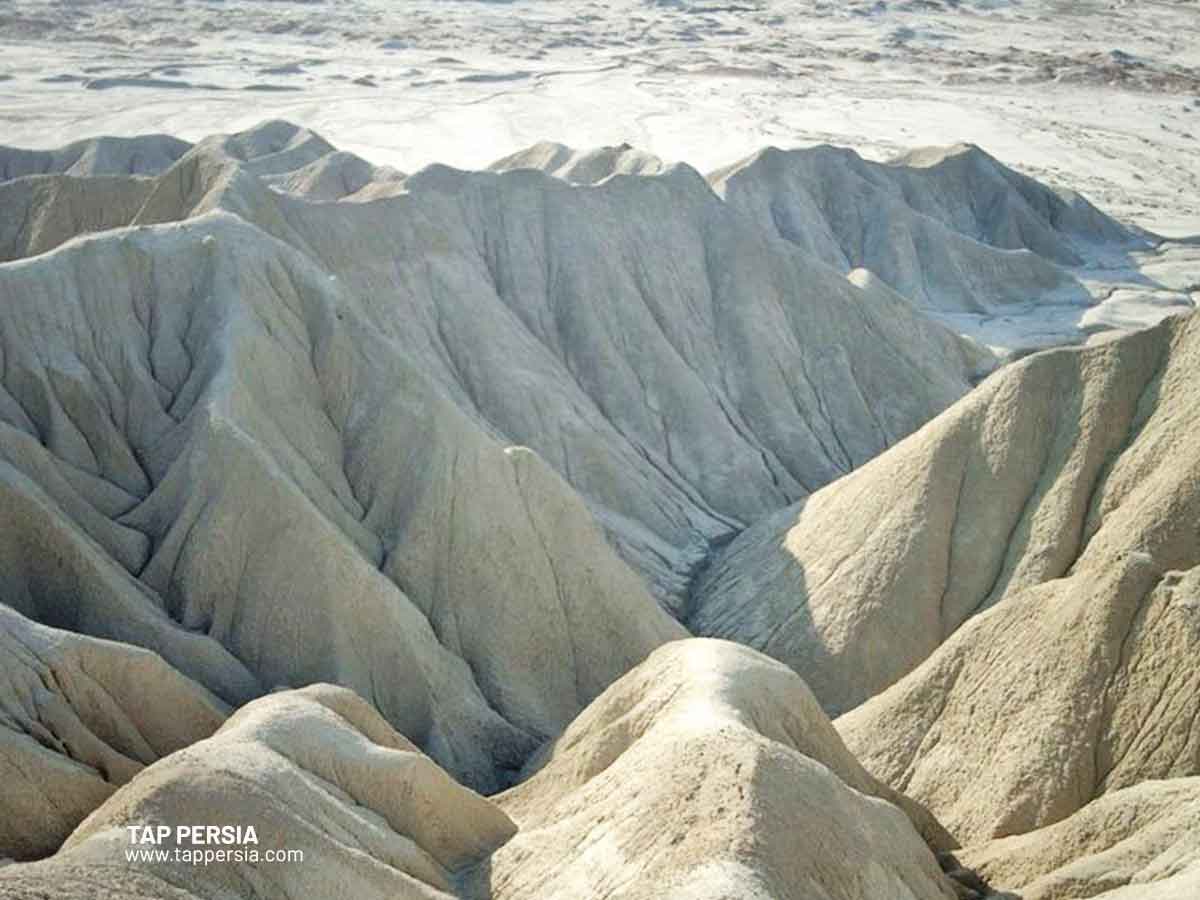
In the tiny village of Gachin, there is a curving salt dome that is a second Bandar Abbas salt construction.
13.The Salt Dome of The Pol
This salt dome can be found at Bandar Abbas, which is 4 kilometers away from Bandar-e Pol. On the slopes of this dome, salt crystals are clearly visible. Red is the primary hue.
14.Lark Salt Dome
Lark Salt Mine is another naturally occurring salt formation near Bandar Abbas. Salt deposits have developed over many years into a salt mountain and a salt dome.
15.Darbast Salt Dome
Bandar Abbas is the location of this salt construction. Additionally, it is surrounded by a circular environment. This significant mine contains iron oxide and salt crystals.
16.Khormoj Salt Dome
This salt dome can be found in Bushehr Province’s Khormoj city. Around it, there are several picturesque streams. It is challenging to reach this mine due to the area’s impassibility, making it one of the hardest salt domes of Iran to navigate.
17.Salt Dome of Hormuz Island
Red, green and grey hues may be noticed on this dome. Additionally, it is a valuable supply for many sectors.
18.Kermostij Salt Dome
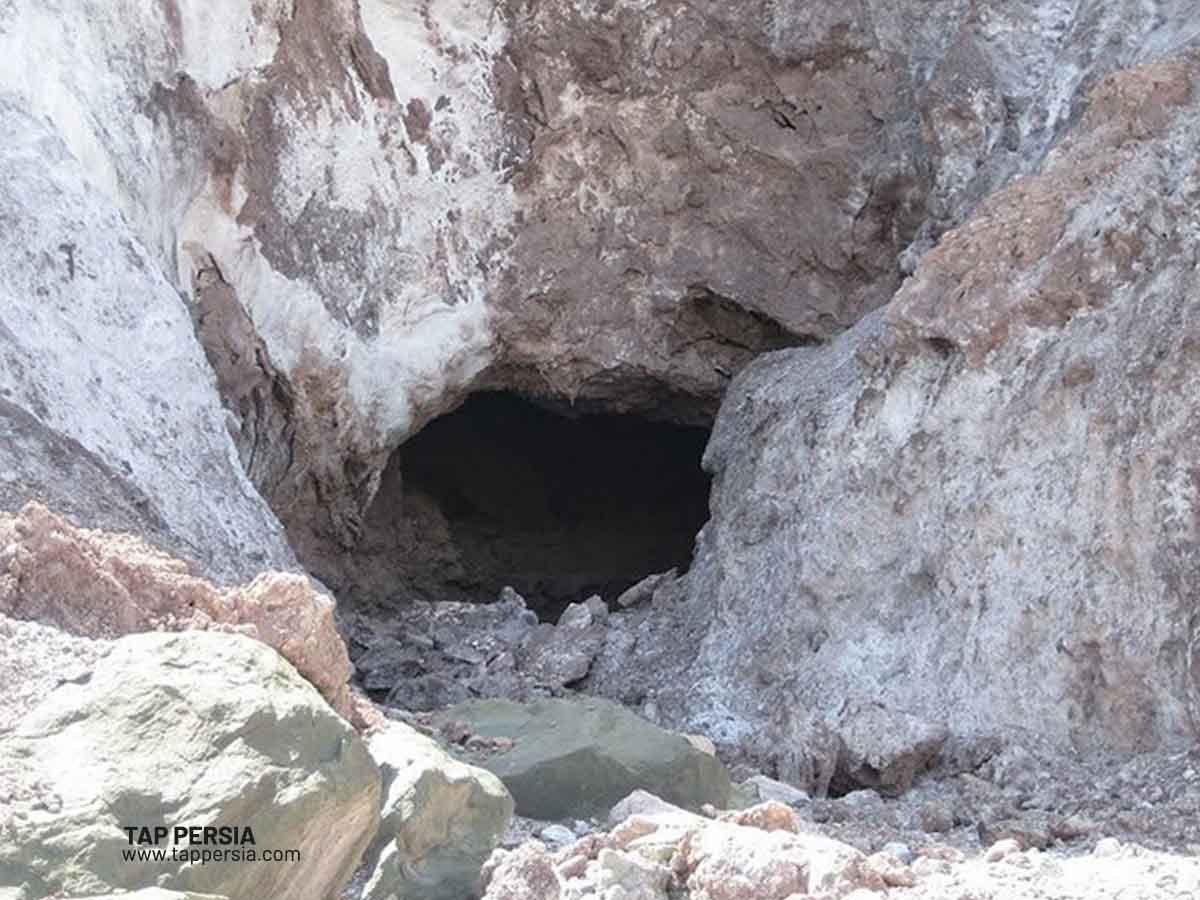
This phenomenon happens naturally in the Fars region and the city of Lar. This region’s salt deposits have formed enormous holes and stunning caverns.
19.Bazanjan Salt Dome
The province of Kerman is where you may find this salt formation. In this city, salt deposits take the shape of elliptical hills.
Comparison with other similar properties
In fact, the salt domes of Iran, especially those in Fars Province, are extraordinary, singular instances of salt tectonics. The world’s most distinctive and singular salt domes are those on Qeshm Island. The salt domes of Iran have a variety of salt karst landforms. Additionally, they might be contrasted with those in the USA, Turkmenistan, and the eastern Mediterranean area.
Additionally, according to an IUCN research, the salt karst in southern Iran was deemed deserving of inclusion as a World Heritage Site because of its distinctive characteristics. Generally speaking, there are over 28 sites with Karst and disintegration sights spread over the World Heritage list. None of these assets contain salt karst landscape, despite the fact that it has a considerable natural value in the globe.

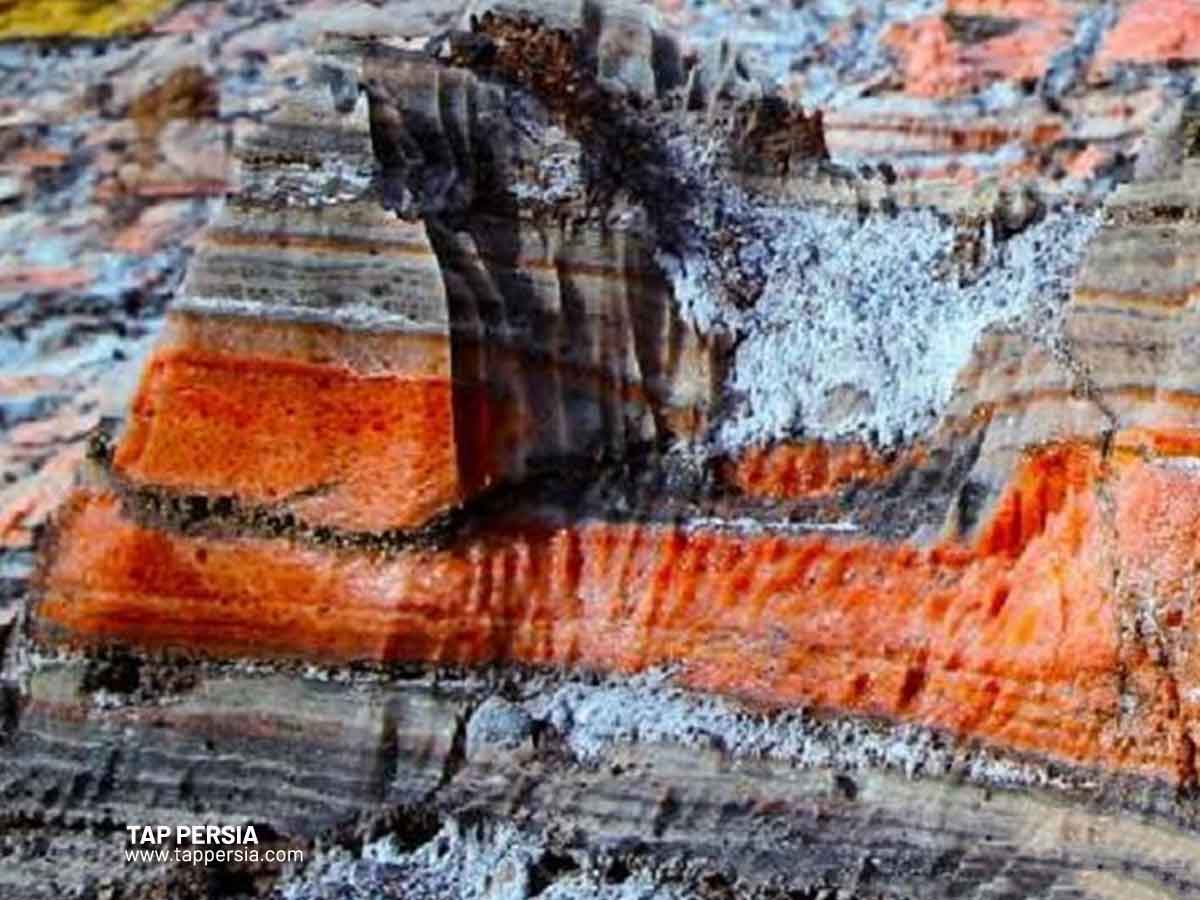


Comment (0)